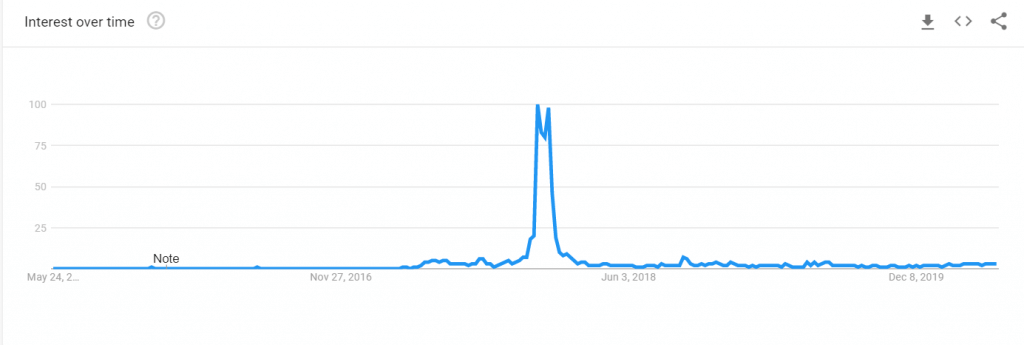Ripple’s polarising XRP token has endured a rollercoaster year thus far, rallying to $0.34 before suffering a major sell-off that saw it fall to a devastating three-year low of $0.13.
It has since, to its credit, surged back towards the $0.20 level of resistance turned support, although the outlook over the next few months looks far from positive.
XRP has undeniably been in a gruelling downtrend ever since its jaw-dropping $3.27 all-time high in January 2018, printing consistent lower lows and lower highs along the way.
There have been rare but significant spikes to the upside, notably in September 2018 and again in May 2019, but it has often failed to establish levels of support above $0.50.
Ever since the daily death cross, which saw the 50 EMA cross the 200 EMA to the downside in July last year, XRP has failed to trade above the confluence of the cross at $0.37, with it falling short in February by a couple of cents.
In order to trigger a bullish reversal, which at the moment seems unlikely, XRP needs to form a higher low for the first time in more than two years.
It can do this by closing a daily or weekly candle above the $0.37 or $0.41 levels of resistance, although a break above the psychological level at $0.50 would be preferable.

Regardless, when looking at Google search trends for ‘buy XRP’, retail interest remains at its lowest point since before the 2017 bull market.
This, coupled with XRP token sales by the Ripple foundation, doesn’t bode well for the future price action of XRP as it means that a new all-time high is ultimately achievable.
Ripple CEO Brad Garlinghouse has said that XRP token sales are vital to the survival of the company, while supporters of the project have heaped scrutiny on the board for an act that they consider to be disingenuous.
For more news, guides and cryptocurrency analysis, click here.
Disclaimer: This is not financial advice. The author of this article does not hold, trade or have a vested interest in XRP.
Disclaimer: The views and opinions expressed by the author should not be considered as financial advice. We do not give advice on financial products.
